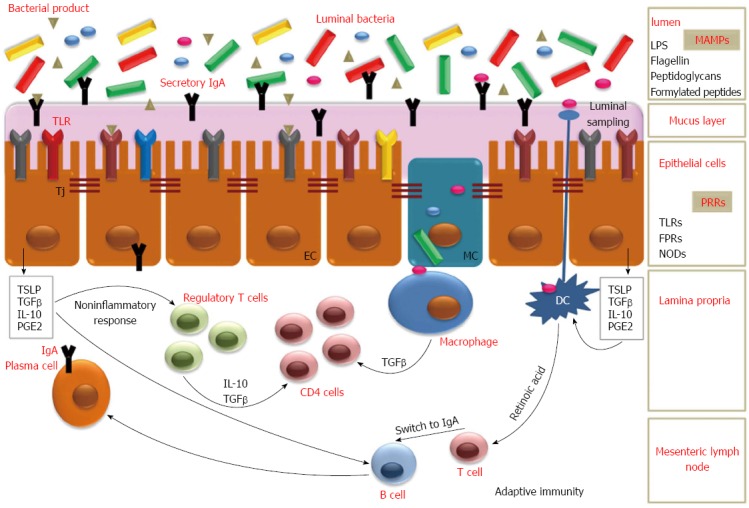Figure 1.

Interactions between luminal bacteria and intestine. The interaction between luminal bacteria and EC causes the production of cytokines, such as TGF-β, TSLP, IL-10 that may induce inflammatory cytokines synthesis from DC and mononuclear cells. These substances, together with retinoic acid produced by DC, can also promote the IgA switch in B cells. In Peyer’s patches DC and macrophages uptake bacterial antigens. The TSLP produced by TLR signaling, enhance APRIL and BAFF production from DC. Anti-inflammatory response is mainly mediated by TGF-β production by epithelial cells and IL-10 from mononuclear cells. Moreover, the interaction with commensal bacteria can result in T-cell expansion and regulation of Th-cells. Probiotics may modulate intestinal function, and in particular mucosal immunity, by secreted factors and by direct interactions with immune cells and the intestinal epithelium. EC: Enterocytes; MC: M cells; Tj: Tight junctions; TGF: Transforming growth factor; TNF: Tumor necrosis factor; TSLP: Thymic stromal lymphopoietin; DC: Dendritic cells; TLR: Toll-like receptors; APRIL: A proliferation-inducing factor; BAFF: B-cell activating factor; IL-10: Interleukin-10; MAMPs: Microbial Associated Molecular Patterns; LPS: Lipopolysaccharide; PRRs: Pattern Recognition Receptors; FPRs: Formylated peptide receptors; NODs: Nucleotide-binding oligomerization domain-like receptors.
